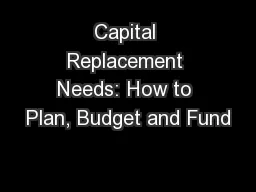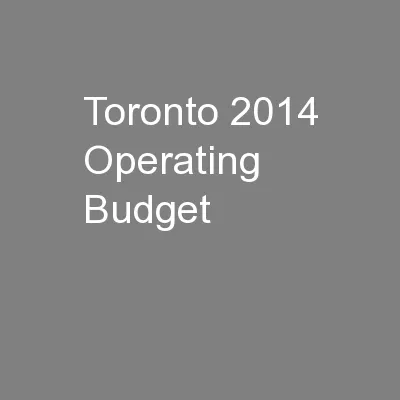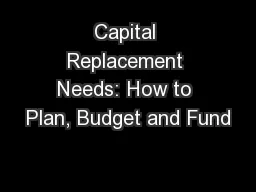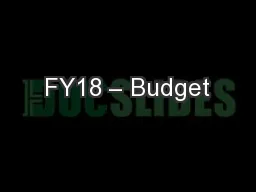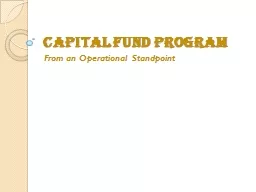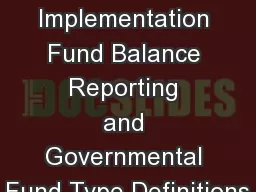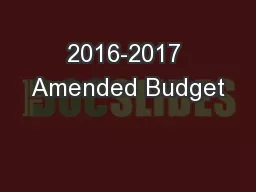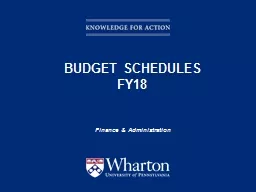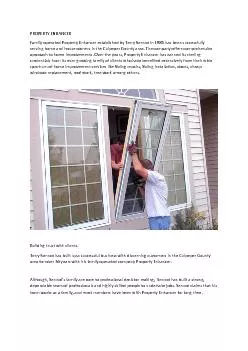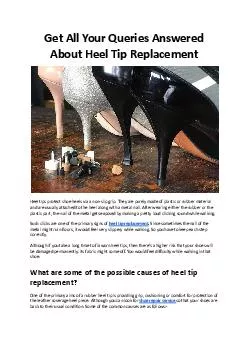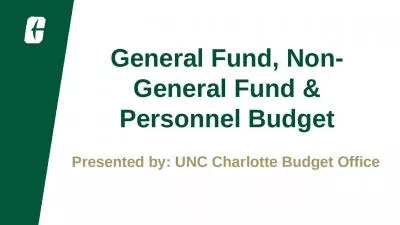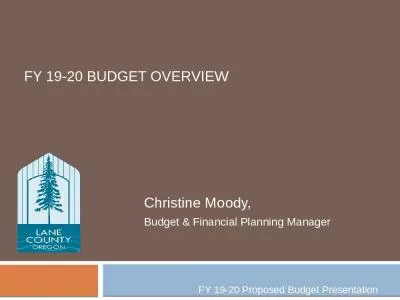PPT-Capital Replacement Needs: How to Plan, Budget and Fund
Author : phoebe-click | Published Date : 2018-09-25
October 27 2015 Michael Kinder and Sons We Listen We Care We Win Together Zech Oberlin Routine Maintenance Do you have a maintenance plan If so do you have a
Presentation Embed Code
Download Presentation
Download Presentation The PPT/PDF document "Capital Replacement Needs: How to Plan, ..." is the property of its rightful owner. Permission is granted to download and print the materials on this website for personal, non-commercial use only, and to display it on your personal computer provided you do not modify the materials and that you retain all copyright notices contained in the materials. By downloading content from our website, you accept the terms of this agreement.
Capital Replacement Needs: How to Plan, Budget and Fund: Transcript
Download Rules Of Document
"Capital Replacement Needs: How to Plan, Budget and Fund"The content belongs to its owner. You may download and print it for personal use, without modification, and keep all copyright notices. By downloading, you agree to these terms.
Related Documents

